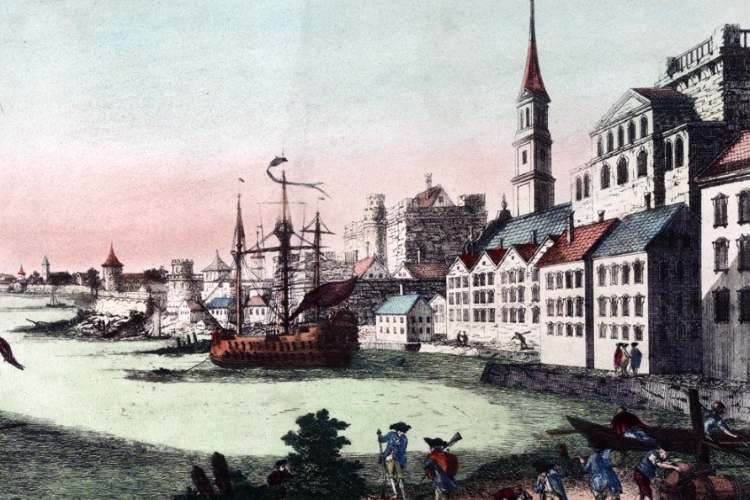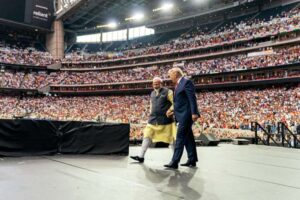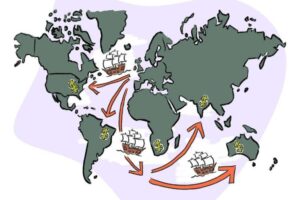
Mercantilism and Trump tariffs: Donald Trump’s trade policy, now in its second iteration with his re-election in 2024, continues to upend long-held economic orthodoxy. His preference for tariffs, disdain for multilateralism, and transactional view of trade recall the tenets of mercantilism more than modern economic theory. The central question is whether Trump’s trade strategy represents a coherent economic framework or merely a blend of political instinct, outdated doctrines, and electoral posturing.
Mercantilism, which flourished in the 17th and 18th centuries, sees trade as a zero-sum contest—national wealth increases by maximizing exports and curtailing imports. Trump’s actions largely echo this thinking. According to Big Think (2025), his escalating tariff strategy is built around the premise that trade deficits equate to economic loss. His administration imposed steep tariffs—30–50% on solar panels and washing machines in early 2018, followed by 25% on steel and 10% on aluminum across the board. These were soon extended to long-standing allies such as the EU, Canada, and Mexico.
Trump’s second term has seen an even more aggressive application of this logic: a baseline 10% tariff on most imports, country-specific rates as high as 50%, and a cumulative 145% tariff on Chinese goods as of April 2, 2025. The aim remains unchanged—protect domestic producers and shrink the U.S. trade deficit, which reached $1.2 trillion in goods in 2024.
READ I Income tax bill brings clarity, digital oversight concerns
Trump tariffs and bilateral deficits
Trump’s public statements reinforce the same worldview. He has hailed tariffs as “the most beautiful word in the dictionary” and frequently accused trade partners like China and Japan of exploiting the U.S. economy. His obsession with bilateral trade deficits—China’s stood at $295.4 billion in 2024—suggests a persistent belief that trade must result in a surplus to be considered successful. Modern economists disagree. As Foreign Policy notes, trade imbalances often reflect consumption and investment patterns, not trade malpractice. Viewing trade as a contest of winners and losers runs counter to decades of economic consensus.

David Ricardo’s early 19th-century theory of comparative advantage underpins much of modern trade theory: countries benefit by specializing in what they produce best and trading for everything else. Trump, however, has repeatedly shown disdain for such logic. He has attacked free trade agreements, calling NAFTA “the worst trade deal ever,” and withdrew the U.S. from the Trans-Pacific Partnership (TPP) in his first term.

His second-term tariff regime seems designed to prioritize self-sufficiency over efficiency. On May 4, 2025, he proposed a 100% tariff on foreign films, claiming the domestic film industry is “dying a very fast death.” Other tariffs—17% on Israeli goods, 32% on Taiwanese products (excluding semiconductors), and 31% on South African imports—have been levied with little economic rationale, often targeting friendly nations.
The costs of these policies are real. According to the Center for American Progress, Trump’s 2025 tariffs are expected to increase consumer prices by 2.3%, adding $3,800 to the average household’s annual expenses. The broader impact on supply chains and trade relationships is still unfolding.
Strategic coercion or tactical chaos
Some defenders of Trump’s policy, notably Stephen Miran, chair of the Council of Economic Advisers, suggest there is method in the madness. A November 2024 policy paper floated the idea of a “Mar-a-Lago Accord,” whereby Trump’s tariffs would compel surplus economies to revalue currencies, invest in U.S. manufacturing, and accept “century bonds” in place of conventional debt repayments. This strategy aims to realign global trade in America’s favor, but critics note the lack of economic foundation.
The Atlantic calls the approach chaotic rather than strategic. Tariffs are imposed, paused, and reimposed without warning, creating a climate of uncertainty. Nobel laureate Joseph Stiglitz warns of a “permanent level of uncertainty” in cross-border transactions, which deters investment and erodes confidence in trade agreements. Efforts to strike comprehensive deals with the EU, Japan, and South Korea have stalled, suggesting that the administration’s goals may be more political than economic.
Counting the costs of mercantilism
Despite White House claims of a manufacturing revival and fiscal prudence, the numbers tell a different story. Tariff revenues touched $100 billion by July 2025 and are projected to reach $300 billion by year-end. But these figures are dwarfed by the costs imposed on consumers and businesses. The Yale Budget Lab reports that the effective tariff rate hit 16.6% in 2025—the highest since 1910—and could rise to 20.6% if all proposed measures are enacted.
Moreover, the idea that foreign exporters bear the cost of tariffs is a fallacy. In practice, U.S. importers and consumers absorb most of the impact. This undermines Trump’s core argument that tariffs force foreign nations to pay for America’s trade imbalances.
What’s more, Trump’s narrow focus on goods trade ignores the rising importance of services, particularly in sectors where the U.S. retains competitive strength—finance, education, software, and digital technology. As Stiglitz notes, protectionism in goods risks retaliation in services, where American firms stand to lose more.
Alienating allies, reshaping trade blocs
Trump’s scattershot use of tariffs has also strained traditional alliances. Countries like Japan and South Korea, once central to the U.S.-led trade architecture, are now seeking closer ties with China. The long-term geopolitical costs of such realignments could outweigh the short-term economic gains, if any.
Polling suggests that Trump’s core supporters back his trade posture, though broader approval of his trade policy stands at just 39%. The popularity of his “America First” rhetoric does not negate the structural damage being inflicted on the rules-based global trading system.
Does Trump adhere to any trade theory at all? If so, it is a selective and rebranded version of mercantilism—tailored to modern politics but divorced from economic realities. His approach rejects comparative advantage, ignores mutual benefits, and undermines multilateral cooperation. The notion that tariffs alone can rebalance the U.S. economy misreads the complexity of global value chains and underestimates the long-term costs of disrupted trade.
In time, Trump’s strategy may well become the subject of academic analysis and case studies. Whether it becomes a new chapter in economics textbooks—or a cautionary tale—will depend on the durability of the changes he has set in motion. But one outcome is already clear: the world is entering a phase of deep uncertainty, where trade no longer functions as a stabilizing force but as a flashpoint of political contestation.
Dr Pravin Jadhav is Associate Professor and Head, Department of Humanities and Social Sciences, Institute of Infrastructure Technology Research and Management (IITRAM), Ahmedabad. Dr Jadhav Chakradhar is Assistant Professor of Economics, Centre for Economic and Social Studies (CESS), Begumpet-500016 Hyderabad.
